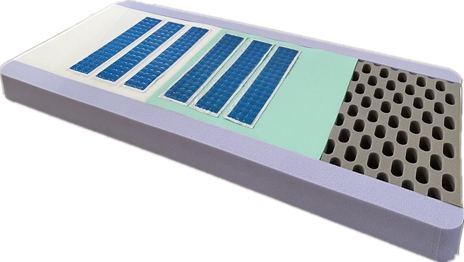Choosing the Right Hospital Bed Mattress to Prevent Pressure Ulcers and Enhance Comfort
The Importance of Hospital Bed Mattresses for Pressure Ulcers
Pressure ulcers, also known as bedsores or pressure sores, are a significant concern in healthcare settings, particularly for patients with limited mobility. These injuries occur when sustained pressure on the skin reduces blood flow to the area, leading to tissue damage. One of the most effective ways to prevent pressure ulcers is through the use of specialized hospital bed mattresses. This article delves into the importance of these mattresses and how they contribute to patient care.
Understanding Pressure Ulcers
Pressure ulcers typically develop over bony areas of the body, such as the heels, hips, and tailbone. They can range from mild redness to severe wounds exposing underlying muscle and bone. The development of pressure ulcers not only leads to severe pain and discomfort for patients but can also result in prolonged hospital stays, increased healthcare costs, and even life-threatening infections.
Role of Hospital Bed Mattresses
Hospital bed mattresses play a crucial role in the prevention of pressure ulcers. Traditional mattresses can contribute to the development of these sores, as they do not provide adequate support or pressure relief. In contrast, specialized mattresses are designed to redistribute pressure evenly across the body, thereby minimizing the risk of skin breakdown.
These mattresses come in various forms, including foam, gel, air-filled, and hybrid systems. Each type has its unique benefits
1. Foam Mattresses These are made from high-density foam that conforms to the body’s shape, providing pressure relief and comfort. They are lightweight, easy to handle, and often cost-effective.
hospital bed mattress for pressure ulcers

2. Gel Mattresses Incorporating gel technology, these mattresses offer excellent pressure distribution and temperature regulation. They help keep the patient cool while reducing the risk of skin breakdown.
3. Air-Filled Mattresses These are adjustable and can be inflated or deflated to change the firmness and support level. They provide excellent pressure relief and are particularly beneficial for patients at high risk of developing pressure ulcers.
4. Hybrid Systems Combining various technologies, hybrid mattresses may include a combination of foam, gel, and air. These systems are designed to provide optimal comfort and support, adapting to the needs of individual patients.
Factors to Consider
When selecting a hospital bed mattress, several factors should be considered
- Patient's Condition The patient’s overall health, mobility level, and specific risk factors for pressure ulcers should guide the choice of mattress. - Weight Distribution Mattresses should accommodate different weights and body shapes to ensure effective pressure relief. - Maintenance and Hygiene Mattresses should be easy to clean and maintain, as hygiene is critical in preventing infection. - Cost and Durability While investing in quality mattresses may seem costly, the long-term benefits in terms of patient outcomes and reduced healthcare costs are significant.
Conclusion
The use of specialized hospital bed mattresses is essential in the prevention of pressure ulcers among patients, particularly those with limited mobility. By providing adequate pressure relief and comfort, these mattresses help to enhance patient care, reduce the incidence of bedsores, and improve overall quality of life. Healthcare providers must be informed about the different types of mattresses available and their specific applications to ensure optimal outcomes for their patients. Investing in the right hospital bed mattress is not just a matter of comfort; it is a crucial step in safeguarding a patient’s health.
-
The Effect of Coconut Foam Mattress Breathability and Humidity Regulation on Improving Sleep QualityNewsJul.03,2025
-
How Wave Mattress Systems Improve Blood Circulation During ImmobilityNewsJul.03,2025
-
The Climate-Adaptive Sleep Revolution: Exploring the Benefits of Cooling Gel Memory Foam MattressesNewsJul.03,2025
-
Exploration of the Role of Coconut Foam Mattress in Preventing Bedsores in the ElderlyNewsJul.03,2025
-
Comparing Wave Mattress and Air Mattress: Which Is Better for Medical Use?NewsJul.03,2025
-
Analysis of Comfort and Environmental Performance of Natural Latex and Coconut Foam MattressNewsJul.03,2025
-
Multi-Layer Construction for Enhanced Performance in Gel Mattress PadNewsJun.24,2025

